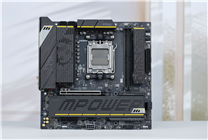Key Highlights:
- PCIe 8.0 standard aims for a staggering 1TB/s bidirectional bandwidth, revolutionizing data transmission rates.
- Draft v0.3 of PCIe 8.0 has been completed and shared with organization members, propelling the development process forward.
- PCIe 8.0 maintains backward compatibility while exploring future trends in optical fiber transmission.
In early August of this year, the PCI SIG (PCI Special Interest Group) officially announced the forthcoming PCIe 8.0 standard specification, anticipated for release in 2028. Remarkably, less than two months later, the organization has finalized an internal draft of the initial version, designated as v0.3. This swift progression exemplifies the organizational efficiency of PCI SIG.
The current draft of PCIe 8.0 confirms several critical technical priorities. Notably, it continues to employ the PAM4 signaling mechanism while doubling the data transmission rate compared to PCIe 7.0. This results in impressive performance improvements: PCIe 8.0 will operate at rates four times faster than PCIe 6.0, eight times that of PCIe 5.0, and sixteen times the capabilities of PCIe 4.0, achieving an astounding maximum of 256 GT/s. Additionally, the new standard ensures backward compatibility with previous generations.
With these advancements, PCIe 8.0 x16 slots will boast a one-way bandwidth of 512GB/s, achieving a remarkable total of 1TB/s bidirectionally. This significant leap showcases the evolving demands for data transfer in contemporary applications.
For commonly utilized x4 bandwidth configurations, particularly in SSDs, PCIe 8.0 is poised to deliver 64GB/s in one direction, further enhancing the efficiency of data-intensive operations.
Moving forward, PCI SIG and its affiliated members will continue to refine and advance the specification, progressing through multiple draft versions until they reach the finalized v1.0. This collaborative effort signifies a commitment to ensuring optimal performance and adaptability in an ever-evolving technological landscape.
Importantly, PCIe 8.0 adheres to industry tradition by opting not to implement optical fiber transmission in this phase. However, discussions surrounding this technology are ongoing within PCI SIG, as it holds potential to substantially improve performance and reduce latency. Nevertheless, challenges concerning cost and compatibility hurdles remain significant obstacles to widespread adoption.
In addition, it is noteworthy that Wi-Fi 8 is also expected to launch in 2028, potentially aligning with the introduction of PCIe 8.0, heralding a new era of connectivity and data throughput.
This rapid development in standards like PCIe 8.0 not only reflects the increasing requirements for bandwidth and speed in various applications—from gaming to data centers—but also underscores the continuous evolution of technology as organizations strive to meet modern demands.
As we anticipate the finalization of PCIe 8.0, industry stakeholders and technology enthusiasts alike can expect to witness a substantial transformation in how data is processed, stored, and transmitted, setting new benchmarks for performance and efficiency in the years to come.
In conclusion, PCIe 8.0 promises to redefine high-speed data transfer with its groundbreaking bidirectional bandwidth capabilities and continued commitment to backward compatibility, marking yet another significant progress in the realm of PCI standards.






